SCENIC model
Scene-aware semantic navigation and command-guided control model

Product Details
SCENIC is a text-conditional scene interaction model that can adapt to complex scenes with different terrains and supports user-specified semantic control using natural language. The model navigates a 3D scene using user-specified trajectories as sub-goals and text prompts. SCENIC uses a hierarchical scene reasoning method, combined with frame alignment between motion and text, to achieve seamless transitions between different motion styles. The importance of this technology lies in its ability to generate character navigation actions that comply with real physical rules and user instructions. It is of great significance to fields such as virtual reality, augmented reality, and game development.
Main Features
How to Use
Target Users
SCENIC's target audience includes developers and researchers in the fields of virtual reality, augmented reality, game development and other fields. These users need to create character actions that comply with physical rules and user instructions, and SCENIC provides a powerful tool to achieve these needs.
Examples
In virtual reality games, SCENIC is used to generate character movements that conform to the terrain and user commands.
In augmented reality applications, the character's navigation path is generated based on the user's natural language instructions.
In film production, SCENIC is used to generate character movements in complex scenes to improve production efficiency.
Quick Access
Visit Website →Categories
Related Recommendations
Discover more similar quality AI tools

PokemonGym
PokemonGym is a server-client architecture-based platform designed for AI agents to be evaluated and trained in the Pokemon Red game. It provides game state through FastAPI, supports human interaction with AI agents, and helps researchers and developers test and improve AI solutions.

GameGen-X
GameGen-X is a diffusion transformation model designed for generating and interactively controlling open-world game videos. This model achieves high-quality, open-domain video generation by simulating various features of game engines, such as innovative characters, dynamic environments, complex actions, and diverse events. In addition, it provides interactive control capabilities to predict and change future content based on current video clips, enabling gameplay simulation. To realize this vision, we first collected and built from scratch an Open World Video Game Dataset (OGameData), the first and largest open world game video generation and control dataset, containing more than 1 million diverse gameplay video clips from more than 150 games, all equipped with informative subtitles from GPT-4o. GameGen-X has gone through a two-stage training process, including basic model pre-training and instruction tuning. First, the model is pre-trained with text-to-video generation and video sequels, giving it the ability to generate long-sequence, high-quality open-domain game videos. Further, in order to achieve interactive control capabilities, we designed InstructNet to integrate game-related multi-modal control signal experts. This enables the model to adapt latent representations based on user input, unifying character interaction and scene content control in video generation for the first time. During instruction tuning, only InstructNet is updated, while the pre-trained base model is frozen, allowing the integration of interactive control capabilities without losing the diversity and quality of the generated video content. GameGen-X represents a major leap forward in using generative models for open-world video game design. It demonstrates the potential of generative models as an adjunct to traditional rendering techniques, effectively combining creative generation with interactive capabilities.
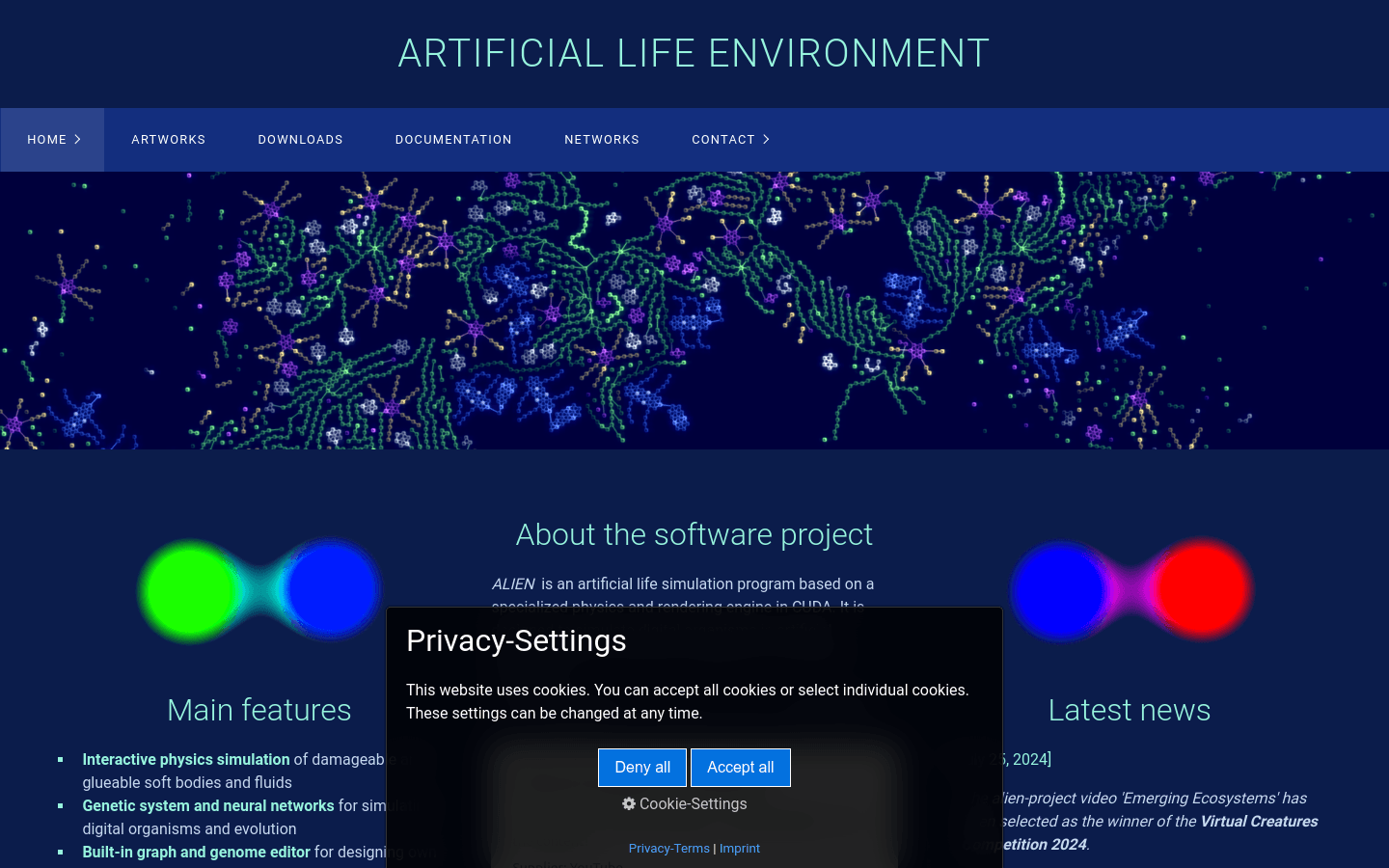
ALIEN
ALIEN is an artificial life simulation program based on CUDA's specialized physics and rendering engine. It is designed to simulate the behavior of digital organisms in artificial ecosystems and serve as a platform for evolutionary simulation. This software project is open source and follows the BSD-3-Clause license.

Tempest AI
Tempest AI is a platform for quickly building games without coding. It uses a powerful AI assistant to help users create games from scratch, supporting dynamic characters, adaptive missions and interactive worlds. Users can build worlds through the drag-and-drop editor, design game mechanics, and control game narrative through the story builder. Tempest AI is not only suitable for game developers, but also for enthusiasts who want to explore creative and interactive storytelling.
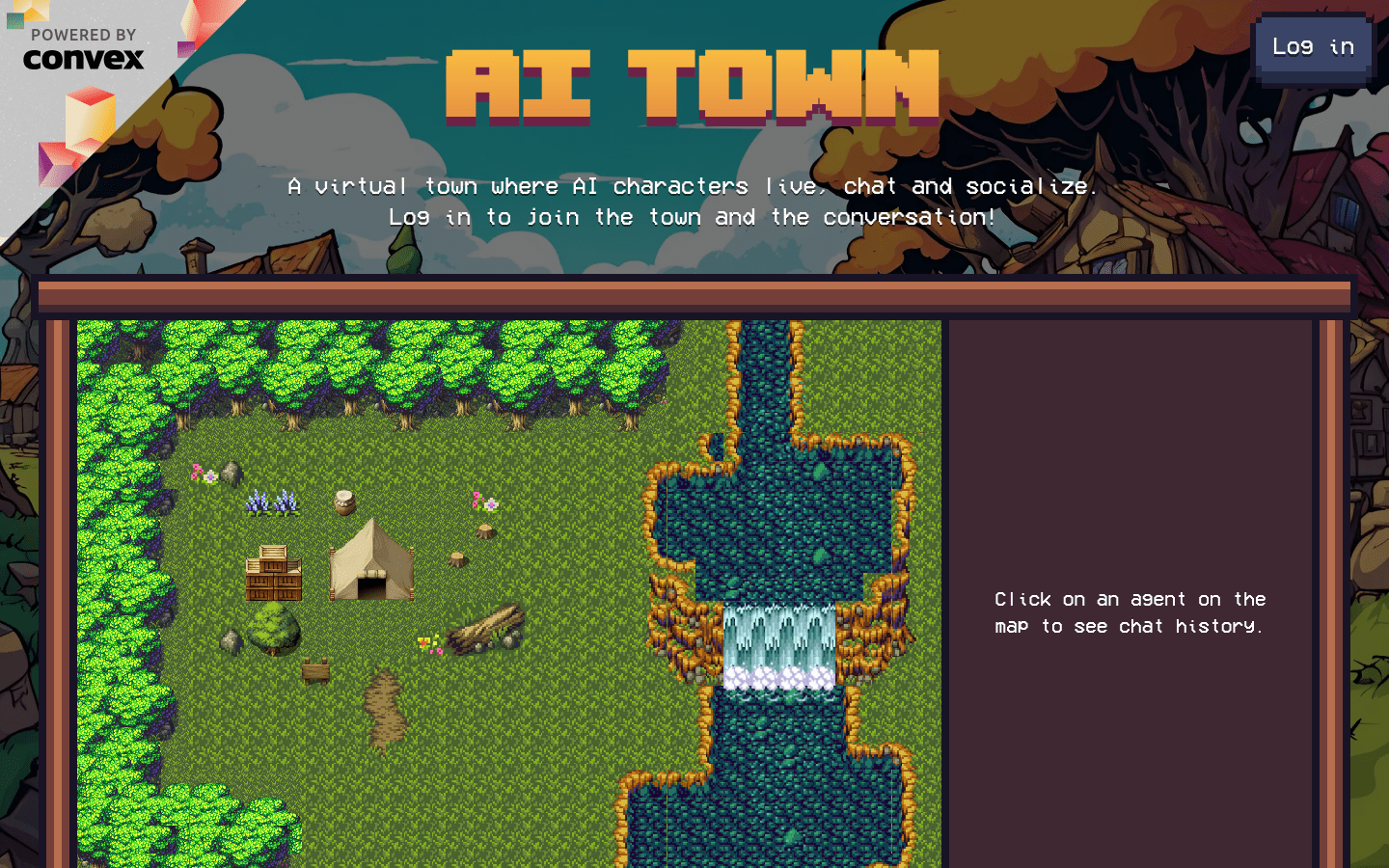
AITown
AI Town is an MIT-licensed deployable starter kit for building and customizing your own version of AI Town. This project was inspired by the research paper 'Generative Agents: Interactive Simulacra of Human Behavior' and aims to provide a powerful base platform designed to be extended. The backend natively supports shared global state, transactions, and a simulation engine for everything from simple projects to scalable multiplayer games.
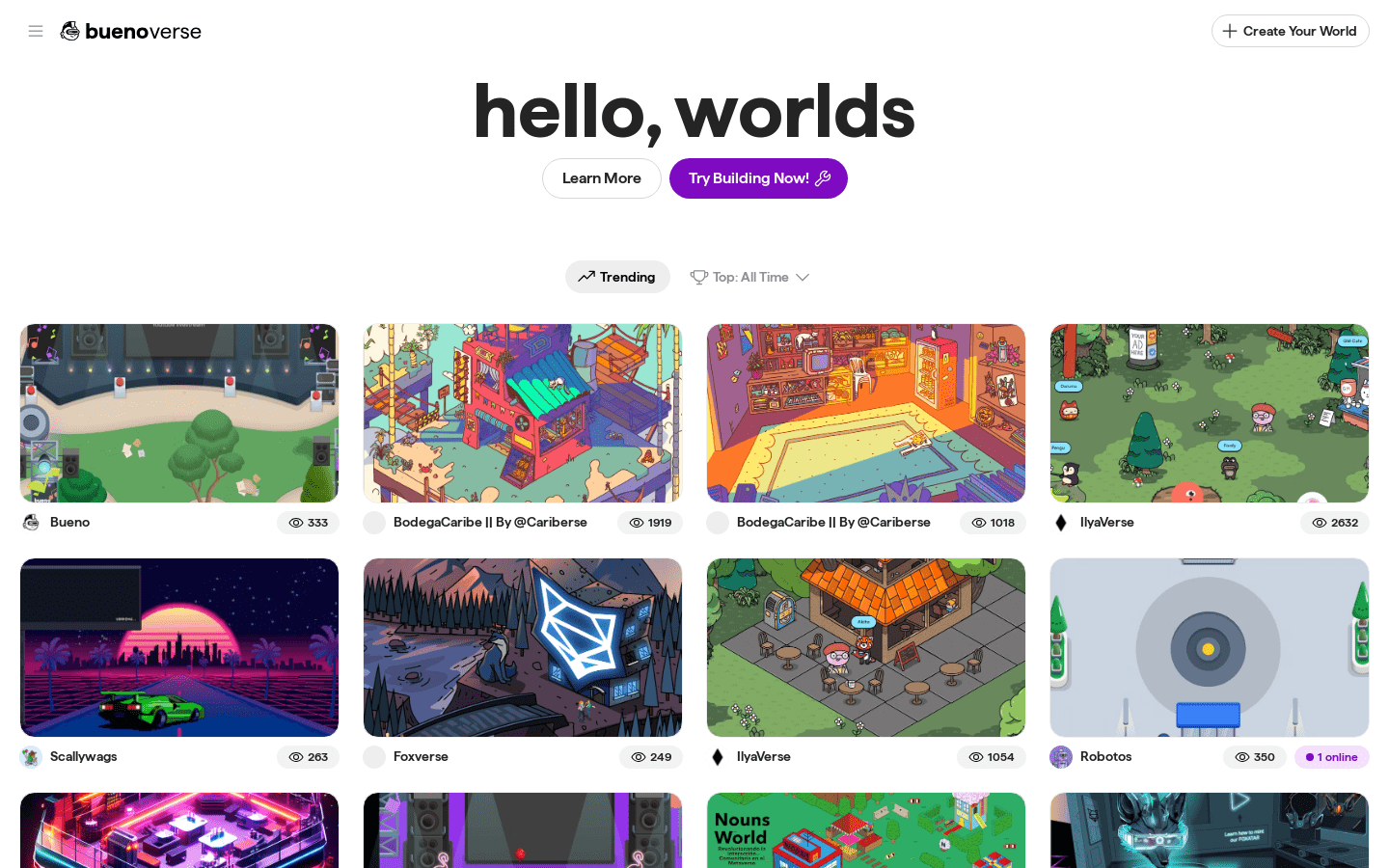
Buenoverse
Buenoverse is a no-code 3D world and game building platform for ordinary users. It provides a drag-and-drop visual editor and integrates a large number of 3D resources. Users can quickly build their own 3D spaces, scenes and even games without programming. The platform supports browsers and VR devices, and the output works can be used on websites or apps, or can be packaged to generate executable programs.

Betafish.js
Betafish.js is a JavaScript library that provides chess AI functionality. It can perform game analysis based on the incoming FEN string and generate the next best AI move. Betafish.js has an efficient search algorithm and optimized evaluation function to make the best decision within a given thinking time. It is suitable for building online chess games, educational projects or for testing and demonstrating AI algorithms.

Cognitora
Cognitora is the next generation cloud platform designed for AI agents. Different from traditional container platforms, it utilizes high-performance micro-virtual machines such as Cloud Hypervisor and Firecracker to provide a secure, lightweight and fast AI-native computing environment. It can execute AI-generated code, automate intelligent workloads at scale, and bridge the gap between AI inference and real-world execution. Its importance lies in providing powerful computing and operation support for AI agents, allowing AI agents to run more efficiently and safely. Key benefits include high performance, secure isolation, lightning-fast boot times, multi-language support, advanced SDKs and tools, and more. This platform is aimed at AI developers and enterprises and is committed to providing comprehensive computing resources and tools for AI agents. In terms of price, users who register can get 5,000 free points for testing.

Macroscope
Macroscope is a programming efficiency tool that serves R&D teams. It has received US$30 million in Series A financing and has been publicly launched. The core functions focus on code management and R&D process optimization. By analyzing the code base to build a knowledge graph and integrating a multi-tool ecosystem, it solves the pain points of engineers being burdened with non-development work and managers having difficulty keeping track of R&D progress. Its technical advantage lies in multi-model collaboration (such as the combination of OpenAI o4-mini-high and Anthropic Opus 4) to ensure the accuracy of code review, and customer data is isolated and encrypted, compliant with SOC 2 Type II compliance, and promises not to use customer code to train models. Pricing is divided into Teams ($30/developer/month, at least 5 seats) and Enterprise (customized price) packages, targeting small and medium-sized R&D teams and large enterprises with customization needs, helping teams focus on core development and improving overall R&D efficiency.

100 Vibe Coding
100 Vibe Coding is an educational programming website focused on quickly building small web projects through AI technology. It skips complicated theories and focuses on practical results, making it suitable for beginners who want to quickly create real projects.

iFlow CLI
iFlow CLI is an interactive terminal command line tool designed to simplify the interaction between developers and terminals and improve work efficiency. It supports a variety of commands and functions, allowing users to quickly perform commands and management tasks. The key benefits of iFlow CLI include ease of use, flexibility, and customizability, making it suitable for a variety of development environments and project needs.

Never lose your work again
Claude Code Checkpoint is an essential companion app for Claude AI developers. Keep your code safe and never lost by tracking all code changes seamlessly.
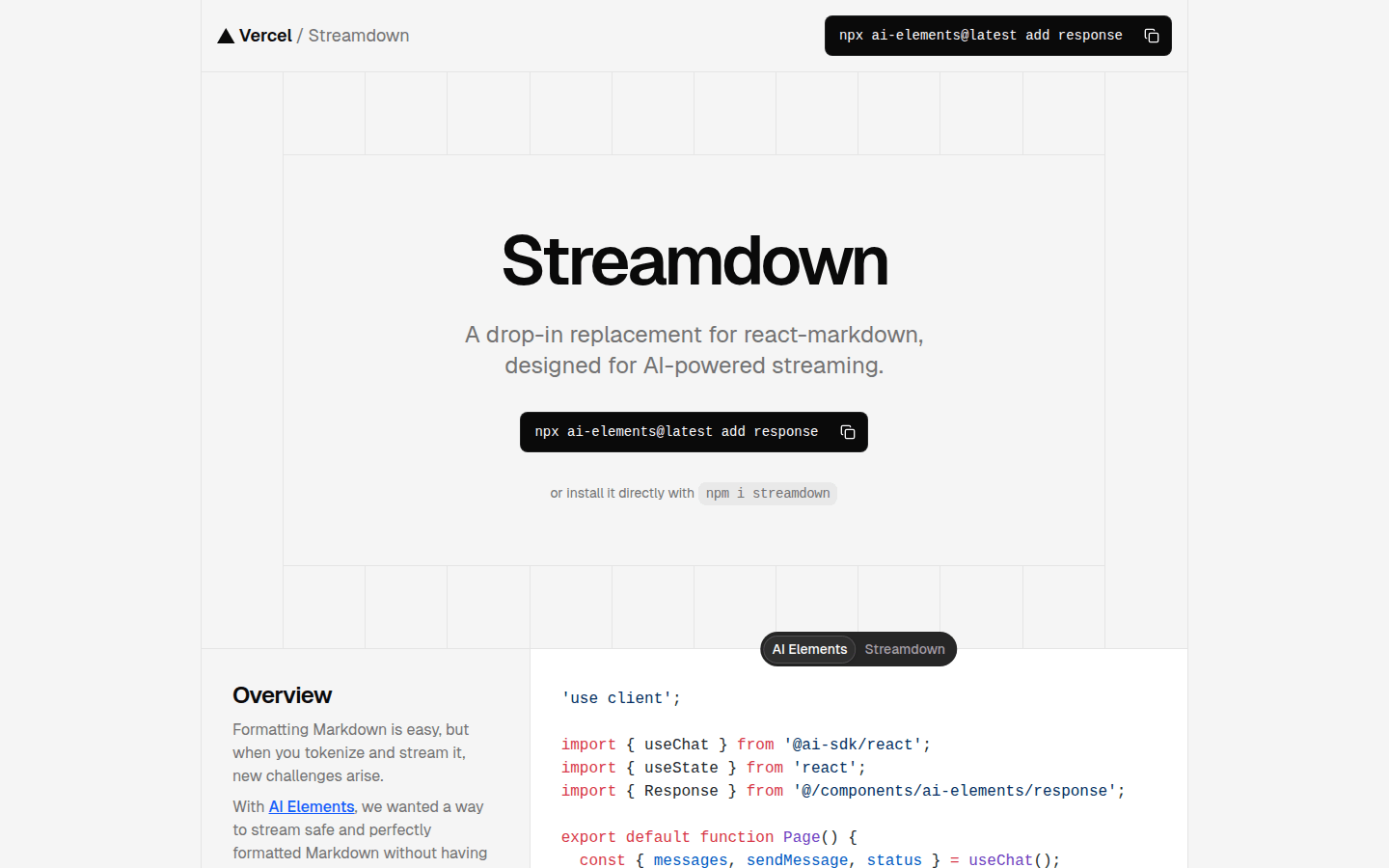
Streamdown
Streamdown is a plug-and-play replacement for React Markdown designed for AI-driven streaming. It solves new challenges that arise when marking and streaming, ensuring safe and perfectly formatted Markdown content. Key advantages include AI-driven streaming, built-in security, support for GitHub Flavored Markdown, and more.
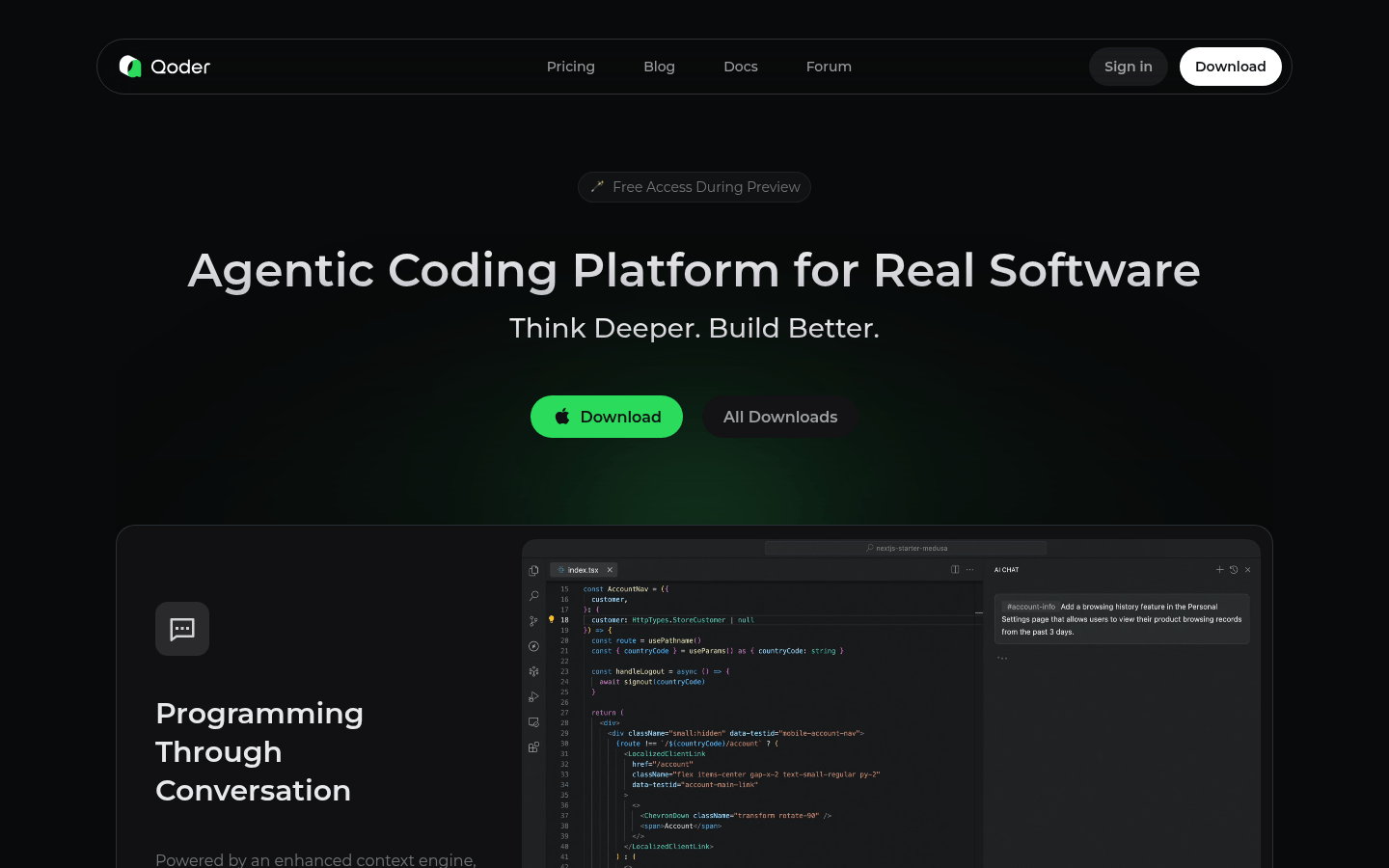
Qoder
Qoder is an agent coding platform that seamlessly integrates with enhanced context engines and intelligent agents to gain a comprehensive understanding of your code base and systematically handle software development tasks. Supports the latest and most advanced AI models in the world: Claude, GPT, Gemini, etc. Available for Windows and macOS.

Compozy
Compozy is an enterprise-grade platform that uses declarative YAML to provide scalable, reliable and cost-effective distributed workflows, simplifying complex fan-out, debugging and monitoring for production-ready automation.